Ever wondered what the difference is between hedgehog vs porcupine? You’re certainly not alone.
Well, in this article we’re going to look at just that. We’ll be exploring the differences between these two animals. Including their appearance, habitat, locations, predators, mating, and more.
Here’s the quick takeaway answer, then we’ll get into more details…
Hedgehog vs Porcupine: Hedgehogs are smaller in size than porcupines in both weight and length. A hedgehog’s spines are evenly distributed, while porcupines have more and longer quills. Porcupines are classed as rodents, but hedgehogs are not. Wild hedgehogs are extremely rare in North America.
Hedgehog vs Porcupine
Ok, there’s the quick response, so now we’ll go through some more major categories where we can compare the two more closely.
Both porcupines and hedgehogs are known for their spiny exterior, but the biggest difference you may notice is in their size.
Hedgehog Description
Hedgehogs are brown in color with a covering of spiky exterior quills.
Mature hedgehogs weigh between 1 to 5 pounds (0.5 and 2 kg) and can range in length from 8 to 14 inches (20 to 35 cm), including the tail which is about 2 inches (4 cm).
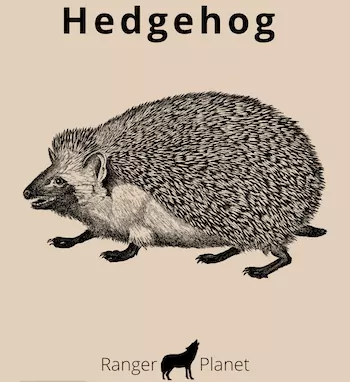
These are general sizes, but hedgehog size does vary slightly depending on their species, see the below table for types of species.
Although their distance and range of vision are poor, they do have good hearing, and their sense of smell is well-developed.
Hedgehogs are also good runners for their size and the length of their legs, they are good climbers too – despite their quills, and they can even swim.
A hedgehog’s quills or spines are hollow hairs made stiff with keratin that is attached very firmly to the skin on their bodies and they rarely detach.
Their spines are evenly distributed to appear as though they are the same length all the way around, usually around 1 inch in length.
Like porcupines quills, a hedgehog’s spines are made out of keratin, which is the same material as your fingernails, but they grow shorter and thicker.
You might also wonder if hedgehogs have fleas in their coats.
Porcupine Description
Porcupines are rodents (while hedgehogs are not classed as rodents), with a coat of sharp spines, commonly referred to as quills, that protect against attack from predators.
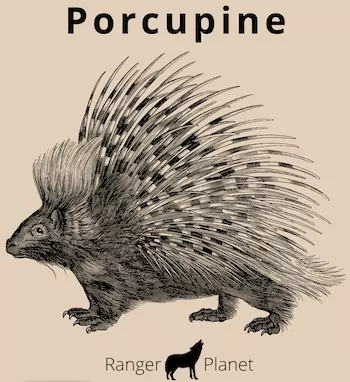
They range in size depending on the variety, anything from 2.2 lb (1kg), up to over 60 lb (27 kg). In terms of size, most porcupines are around 25–36 in (60–90 cm) long, with an 8–10 in (20–25 cm) long tail.
The porcupine has small eyes, very little neck, and weak hindquarters. This animal relies on its strong front legs to rapidly climb trees in the face of danger.
Most species of porcupines are nocturnal but some are active during the day.
Hedgehog vs Porcupine – Species
The table below shows a list of the common species of hedgehog vs porcupine (new world species only).
| Hedgehog Species | Porcupine (New world) Species |
|---|---|
| Somali hedgehog, (Atelerix sclateri) | Baturite porcupine – (C. baturitensis) |
| Four-toed hedgehog, (Atelerix albiventris) | Black-tailed hairy dwarf porcupine – (C. melanurus) |
| North African hedgehog, (Atelerix algirus) | Andean porcupine – (C. quichua) |
| Southern African hedgehog, (Atelerix frontalis) | Streaked dwarf porcupine – (C. ichillus) |
| Hugh’s hedgehog, (Mesechinus hughi) | Brazilian porcupine –(C. prehensilis) |
| Daurian hedgehog, (Mesechinus dauuricus) | Mexican hairy dwarf porcupine – (C. mexicanus) |
| Small-toothed forest hedgehog, (Mesechinus miodon) | Bahia porcupine – (C. insidious) |
| Gaoligong forest hedgehog, (Mesechinus wangi) | Black dwarf porcupine – (C. nycthemera) |
| Amur hedgehog, (Erinaceus amurensis) | Rothschild’s porcupine – (C. rothschildi) |
| European hedgehog, (Erinaceus europaeus) | Frosted hairy dwarf porcupine – (C. pruinosus) |
| Southern white-breasted hedgehog, (Erinaceus concolor) | Stump-tailed porcupine – (C. rufescens) |
| Northern white-breasted hedgehog, (Erinaceus roumanicus) | Roosmalen’s dwarf porcupine – (C. roosmalenorum) |
| Indian long-eared hedgehog, (Hemiechinus collaris) | Santa Marta porcupine – (C. sanctamartae) |
| Long-eared hedgehog, (Hemiechinus auritus) | Brown hairy dwarf porcupine – (C. vestitus) |
| Desert hedgehog, (Paraechinus aethiopicus) | Coandumirim – (C. speratus) |
| Indian hedgehog, (Paraechinus micropus) | Paraguayan hairy dwarf porcupine – (C. spinosus) |
| Brandt’s hedgehog, (Paraechinus hypomelas) | Bicolored-spined porcupine – (C. bicolor) |
| Bare-bellied hedgehog, (Paraechinus nudiventris) | North American porcupine – (E. dorsatum) |
Hedgehog – Lifespan
The lifespan of a hedgehog is around 5 years, but on average they will live around 3 years in the wild.
In captivity, however, a hedgehog is likely to live as long as 10 years, even when kept in an outside enclosure.
Porcupine – Lifespan
In the wild, porcupines live for around 7 to 12 years. While in captivity, the average lifespan is 15 years.
Hedgehog – Location in the world
Despite popular belief, hedgehogs did not originate from Europe, they originated in Asia and Africa.
But now, hedgehogs can be found on every continent except Antarctica. But they are not native to Australia, and you will rarely find them in North America. They are legal as pets but they can be hard to find in the wild.
Porcupine – Location in the world
Porcupines are found all over the world except for Australia, Greenland, Madagascar, New Zealand, and northern Europe.
Mostly, porcupines are native to North America, Central America, South America, Africa, and Europe.
Hedgehog – Habitat
A hedgehog’s natural habitat is grasslands, and savannas, but they have adapted to human lands as well as forests and deserts.
In urban areas, they live in gardens or small wooded areas and usually in dense undergrowth away from humans and main routes.
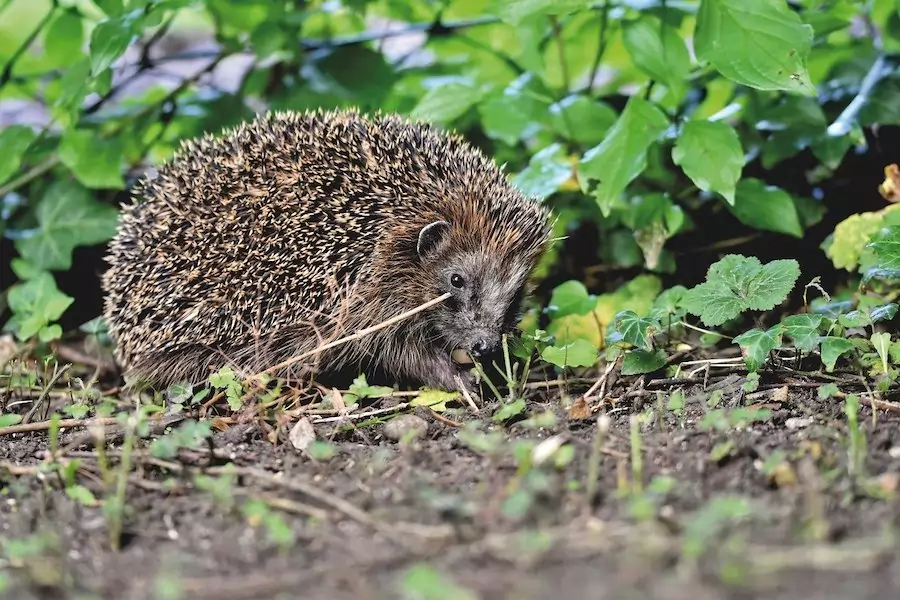
Porcupine – Habitat
Porcupines are forest-dwelling animals that prefer to live in trees or caves.
They can be seen in habitats that are temperate, subtropical, or tropical. They’re also found in elevations anywhere between sea level and 18,700 ft (5,700 meters).
These porcupine habitats typically include coniferous and deciduous forests, woodlands, shrubland, grasslands, deserts, and wetlands.
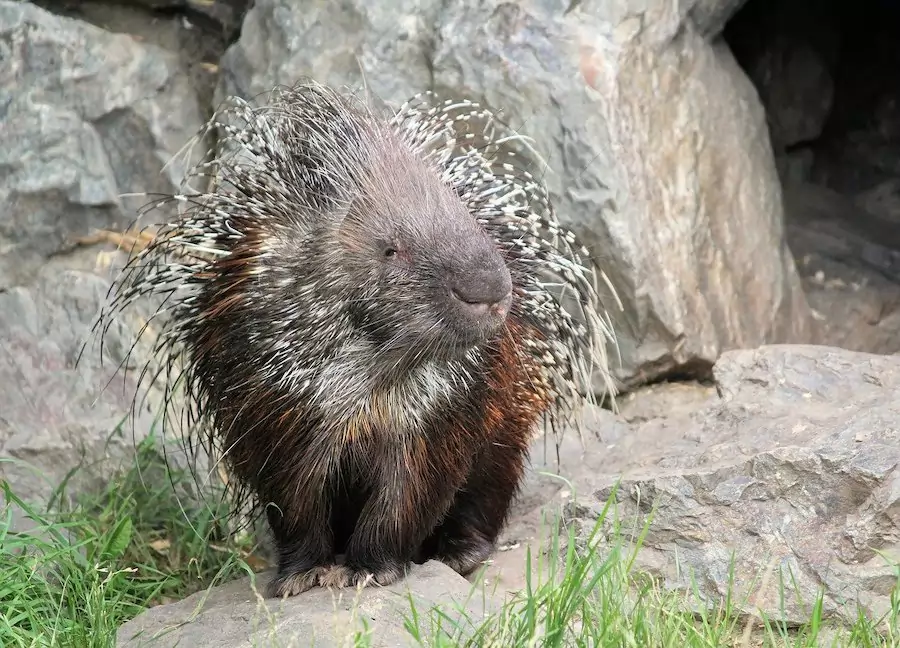
Hedgehog – Diet
As hedgehogs age, their diet may change.
A hedgehog’s main source of food is insects, so they are classed as insectivores. But, their typical diet does also vary depending on the season. They have been known to feed on frogs, mice, and small snakes.
Insects are usually most abundant during the spring and summer months so it’s common for an adult hedgehog to eat more insects than fruits and vegetables at this time of year.
In late fall and during winter, hedgehogs may need to rely on foods such as berries, fruits, and seeds.
Porcupine – Diet
Porcupines are predominantly herbivores, with blunt molars adapted for grinding plant food.
They generally eat leaves, branches, and roots of trees or shrubs. Sometimes porcupines will also eat other small animals they come across including eggs or insects.
During winter they will often move from place to place in search of food.
Here’s the full list of what porcupines eat.
Hedgehog – Predators
Hedgehogs can curl up into a tight ball when they are in danger, with their spines facing outwards to protect themselves from the predator.
Due to their defenses, hedgehogs rarely fall prey to other animals. Their spines often deter predators from being successful in their attack and allow the hedgehog enough time to remain curled up and defended, or to escape.
The hedgehog’s primary predator is the badger, which has thick skin and can easily remove a section of spines per attack with each bite.
This form of attack may provide the badger with enough prone area of the hedgehog’s quills to provide a source of food.
Other occasional predators include foxes, wild boars, and birds of prey such as owls.
The spines of a hedgehog are very strong and will easily be able to pierce the skin of most attackers. However, they tend to act more like the bristles of a very stiff and spikey broom, making penetration very difficult.
When being handled by their predator, hedgehogs have been known to reach up and bite the inside of the attacker’s limbs.
This risk also deters predators who need to be extra careful. In short, a hedgehog is not an easy meal for most animals …and often, there is easier prey available.
Porcupine – Predators
Porcupines can be hunted by: bobcats, mainly in Canada, fishers mostly in North America, mountain lions, coyotes, and are even sometimes attacked by domestic dogs.
Despite popular myth, when defending itself, a porcupine cannot “shoot” its quills.
A porcupine’s best defense is to stay immobile and ‘play dead’. But if attacked the porcupine will rear up and their quills will stick into the attacker, causing pain.
The quills are not poisonous or barbed, but they are very sharp and difficult to remove from wounds.
Hedgehog – Mating, and rearing in the wild
When it comes to mating, males are sometimes seen fighting with one another in early spring over access to females.
Females may mate with several males when given the opportunity. Sometimes an individual female will be followed by several males, and mating chains may form.
The male grabs the female gently by her neck with his teeth and they mate in a sitting position. When mating is over, the male releases the female, and both go their separate ways.
Mating can last nearly an hour but it usually takes only 5 to 10 minutes for successful impregnation.
Females will give birth to up to six hedgehogs at a time, and they can have two or three litters each year. The gestation period lasts about 38 days.
The young average roughly 1 inch long at birth and weigh 5-15 grams … but averaging around 10 grams.
They are covered with thin white hair and closed eyelids, but their quills do not show until they reach around 20 days. Their quills are very soft and flexible at first, but as they get older they become stiffer and more rigid.
To begin with, they do not leave the nest and must feed solely on milk from the mother. At around one month, when their quills appear they begin to eat insects and meat as well.
Once weaning is complete – usually between 3-5 weeks, young hedgehogs can survive on their own and will usually disperse.
As hedgehogs grow they molt once a year during the summer months.
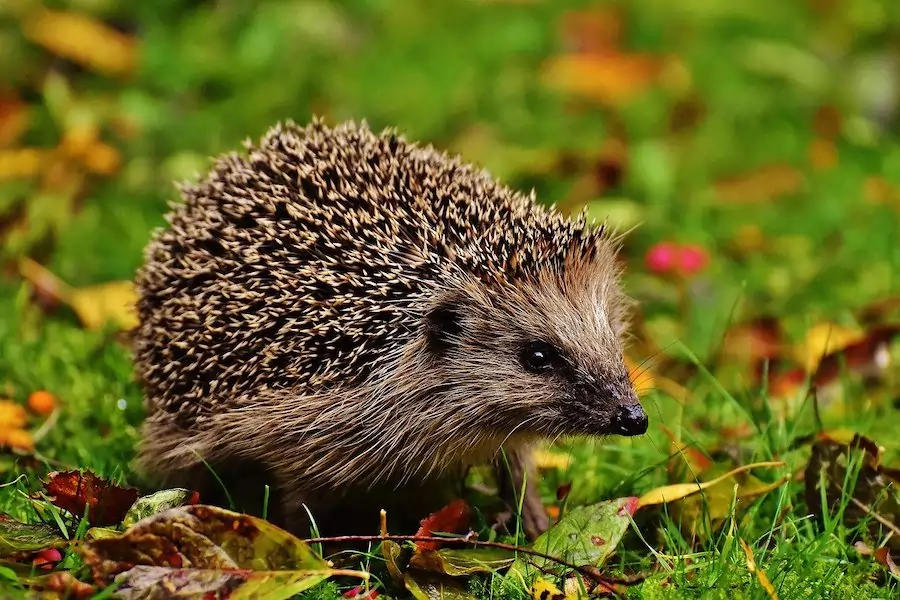
Porcupine – Mating, and rearing in the wild
Porcupines breed only once a year. They find a mate by olfactory and vocal cues. Mating is conducted in both monogamous and polygamous relationships.
Den sites must be prepared for the female to bear young. The dens are lined with bedding material of grass, moss, and cedar needles.
After a pregnancy period of 180-220 days, the female gives birth to between one and five young (but usually two or three).
Baby porcupines are commonly called a “porcupette”. They typically weigh around 16-oz (450g) at birth, have soft quills on their body but not on their face or belly, and are covered with a thin layer of black downy fur.
The young stay with their mother for a period of nursing of about 7–8 months until they’re fully independent.
Their quills are not yet developed, and being born without teeth or claws, makes them vulnerable to predators. The young remain at their mother’s side for about 9 months before venturing out on their own.
As a porcupine grows older, its quills become more brittle and may fall out during periods of molting.
Hedgehog – Conservation status
Hedgehogs are considered a near-threatened species.
Habitat decline is noted as one of the main factors for this status.
Porcupine – Conservation status
Although some porcupine species are already extinct, currently, most porcupine species are categorized as Least Concern, Near Threatened, or Vulnerable according to the International Union for Conservation of Nature (IUCN).
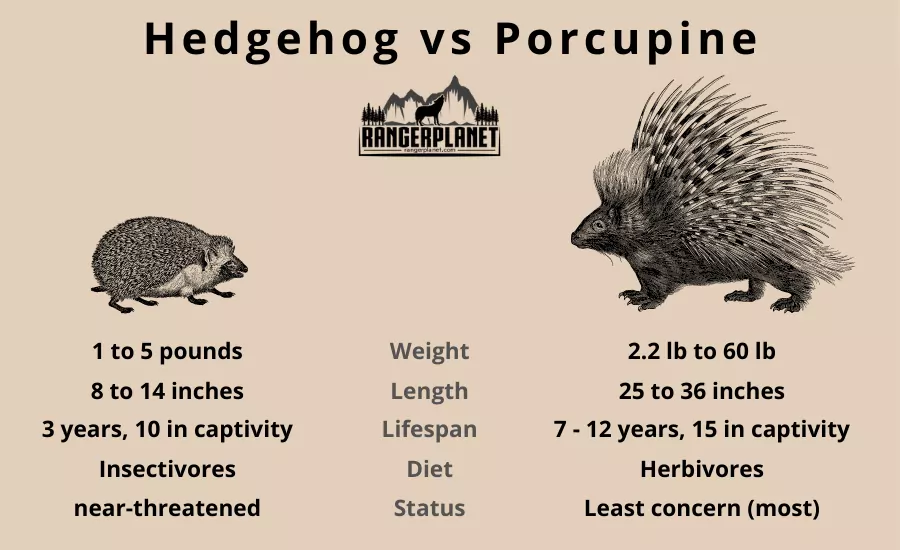
Hedgehog vs Porcupine – More wildlife help
We hope this has provided you with a good overview of hedgehog vs porcupine. They are similar in many ways, but you should now at least be able to tell them apart physically.
Be sure to check out our other comparison articles, such as Elk vs Moose. And also be sure to subscribe to the Ranger Planet YouTube Channel for more wildlife content.
